Paranoiac (1963)
Directed by: Freddie Francis
Written by: Jimmy Sangster, Josephine Tey
Starring: Janette Scott, Maurice Denham, Oliver Reed, Sheila Burrell
UK
AVAILABLE ON BLU-RAY [REGION ‘B’] AND DVD
RUNNING TIME: 80 min
REVIEWED BY:Dr Lenera, Official HCF Critic
The wealthy Ashby family has been damaged by the death of Mr. and Mrs. Ashby in a plane crash when their three children were very young and in the care of their Aunt Harriet. The oldest son, Anthony, committed suicide by jumping off a cliff into the sea when he was 15. The second son, Simon, is now a cruel, spendthrift alcoholic trying to drive his sister Eleanor insane, so that he can inherit the estate of their deceased parents. He has only three weeks to wait until the lawyers will turn the family money over to him. But then a mysterious man who claims to be Tony starts to appear to Eleanor, though nobody else seems to see him. Then Eleanor similarly tries to throw herself off the same cliff, but the man is there to rescue her. Simon is unsure of his identity, while Harriet is convinced flat-out that he’s an impostor….
Though generally not as well regarded as Taste Of Fear, I actually enjoyed this similar exercise in twist-filled suspense with a few dashes of horror a bit more. Perhaps it’s not quite as artistic as Seth Holt’s film [though I don’t think there’s much in it really], but it’s more tense, genuinely scary in at least a couple of places [I don’t know why all these Jimmy Sangster-scripted Hammer thrillers tend to be considered separate to the studio’s Gothic horrors and therefore aren’t nearly as well known and not generally given nearly as much attention], and has an equally surprise-filled plot which doesn’t have the gaping holes that for me weakened Taste Of Fear. A few minor questions remain, such as why does Eleanor continue to call somebody by a particular name, but I wasn’t left with the many questions I had after seeing Taste Of Fear which really did leave me confused, Sangster obviously having worked out his story far more successfully this time around. Highly atmospheric and certainly able to continually keep you guessing, Paranoaic isn’t quite a classic but is still an underrated little exercise in viewer manipulation which holds up very well, though one thing that struck me about it is how, aside from the cars, it could easily have been set in the previous century.
Hammer bought the rights to Josephine Tey’s 1949 novel Brat Farrar in 1954, though no script was written until 1958 when Paul Dehn, then better known as a fillm critic than a screenwriter, did a fairly faithful adaptation. Intended as one of the many Hammers to be distributed by Columbia in the US, Hammer then shelved the project because of the expense required to depict the show-jumping background of the story and Columbia losing interest. Then in 1962, despite the fact that Taste Of Fear had been more of a critical success than a commercial one, Hammer decided that this story, which was along similar lines, did have commercial value and got Jimmy Sangster to write another script which removed the original setting, cut down the number of characters, removed some of the plot but which added a few more twists including a different ending. It was so far from the novel that Hammer almost didn’t apply for the required extension to their screen rights to it. Shot at Bray with some exteriors on the Isle of Purbeck, Surrey, the film, directed was by Freddie Francis in the first of several films the great cinematographer made for the studio, was released by Universal in the US and was double billed in both the US and the UK with The Kiss Of The Vampire. Now most sources fail to mention any censor cuts but the BBFC’s website says that 11 seconds were removed. My guess is that they came in a particular scene featuring Simon and his aunt, a relationship which has slight incestuous aspects, as there is an awkward edit in the scene in the version on the Region 1 DVD. Paranoaic was fairly well received, while Tey’s novel got a more faithful adaption as a 1986 BBC mini-series.
The opening scene in a church nicely gives us some of the background and the story really does get going immediately, not many films choosing to have their heroine already a bit mad right from the beginning. Whether the strange man who begins to appear to her is her long-lost brother or not has little bearing on the fact that she’s just ‘not all there’, presumably because she still hasn’t got over the deaths of her parents and her brother. It’s like she wills her dead brother to reappear, and one wonders how close they really were when they were kids. Meanwhile her other brother Simon is an unpleasant drunk who clearly has his own issues and is perhaps using drink to help deal with them, though one has to chuckle when Oliver Reed plays a character whose first line is: “I’ve been drinking….and now I’m going to drink some more”. Simon is either knocking back the brandy or genuinely pissed in most of his scenes in the film and one wonders how much Reed was acting, though he hadn’t quite yet got his hell-raising, booze-sodden reputation in 1962. One scene had him literally screaming at the family attorney John Kossett because the house has ran out of brandy. The film reveals quite early on that, in cahoots with Francoise the maid, he’s trying to drive Eleanor mad for her money, but that’s not a problem, as the main intrigue seems to surround the visitor, who, after a few slightly eerie appearances, reveals himself to the whole family when he foils Eleanor’s suicide attempt.
I’d seen Paranoaic once before I viewed it for this review, but I couldn’t remember for the life of me whether the guy calling him Tony turns out to be Tony or not, and I’m not going to reveal the answer in this review, nor go into many of the subsequent turns the story takes. The film really enjoys playing games with the viewer, like in the scene where ‘Tony’ is directed upstairs so he can go to his old room. We’re not sure if ‘Tony’ is having a bit of trouble finding the room [some quick shots of doors are flashed before us] is because he’s not Tony and therefore doesn’t have a clue where it is, or because he just can’t remember. The film then does a Vertigo and tells us who Tony is, thereby opting for suspense over surprise, though don’t worry, there are a few surprises still to come in what is quite a fast paced second half. A sequence where ‘Tony’ has to save Eleanor from falling off the edge of a cliff because Simon has tampered with his car is very well put together with only two or three fake looking shots of back projection, and after this it all goes more full-on Gothic, almost Roger Corman/Edgar Allan Poe, with somebody in a really unsettling papier mache mask playing the organ at night [as if Hammer hadn’t quite got The Phantom Of The Opera out of their system], mysterious singing, a revelation about one character which surprised me but which my wife guessed early on, some really blackly comic macabre stuff with a rather convincing corpse, and a climactic conflagration.
The plot, though rather rushed towards the end, is surprisingly airtight though of course it’s always conveniently easy to explain away the inconsistent doings of a character if he or she is certifiably insane. There’s more than a whiff of incest what with Eleanor clearly falling for her ‘brother’ and even kissing him on the lips before recoiling, plus a hint of something between Simon and Aunt Harriet despite the censor’s efforts. Then there’s a superbly shot murder scene by a pond which, if it were in an Alfred Hitchcock movie, would be well known and much discussed to this day where, just as the victim is being strangled, we cut to previously calm ducks in the water moving furiously, then a brilliant shot of the killer’s face reflected in water. Though Arthur Grant, who gives us lots of great film noir-type shots of people’s faces partly in shadow, was the cinematographer, it’s easy to see the hand of director Freddie Francis, who had not long performed similar photographic duties on The Innocents and contributed much to the effect of that terrifying classic, throughout this film with much eye-catching camera placement and several shots where the far left and right sides of the screen are deliberately hazy. Some of these techniques do draw attention to themselves but there’s no doubt that Paranoaic is a great looking film, and one that even almost makes us believe that the familiar Bray interiors are actually inside a gloomy old house on a sea-side cliff somewhere.
Janette Scott isn’t really required to do more than act very weak and wonder about at night in long flowing robes, but she’s fine in the part. Reed’s vindictive but slightly cool and charming sociopath, is terrific, so much so that at times his character seems like a breath of fresh air in the staid household despite being quite horrible, though his rages are very scary. Alexander Davion is very wooden as ‘Tony’ at first but improves, as if they shot the film in sequence. Elisabeth Lutyen’s second score for Hammer is very avant garde and discordant, with few distinct themes but aurally depicting a feeling of madness very well. Paranoaic feels like a few scenes might be missing, as if they ran out of money to shoot them, but Francis, Sangster and Fey’s melding and slight updating of most of the archetypal Victorian sensationalist fiction tropes [disinheritance, dark family secrets, doppelgangers, madness, etc] overall is quite a clever and well crafted example thriller which I feel has been somewhat neglected. After all, it’s still Hammer Horror in some respects.

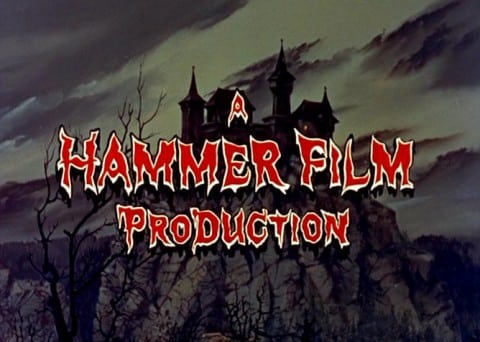


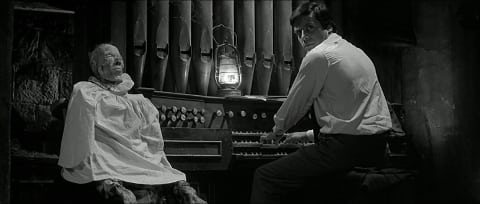




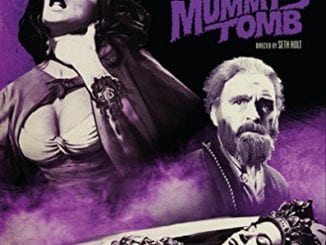
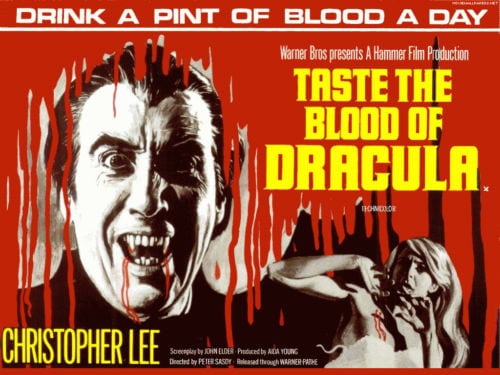
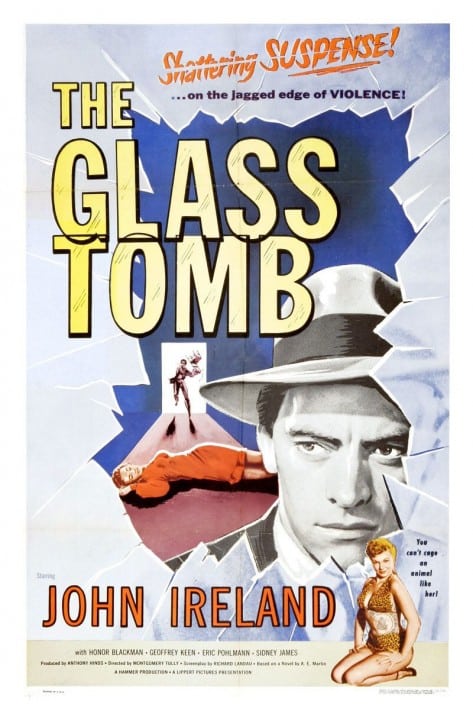
Be the first to comment